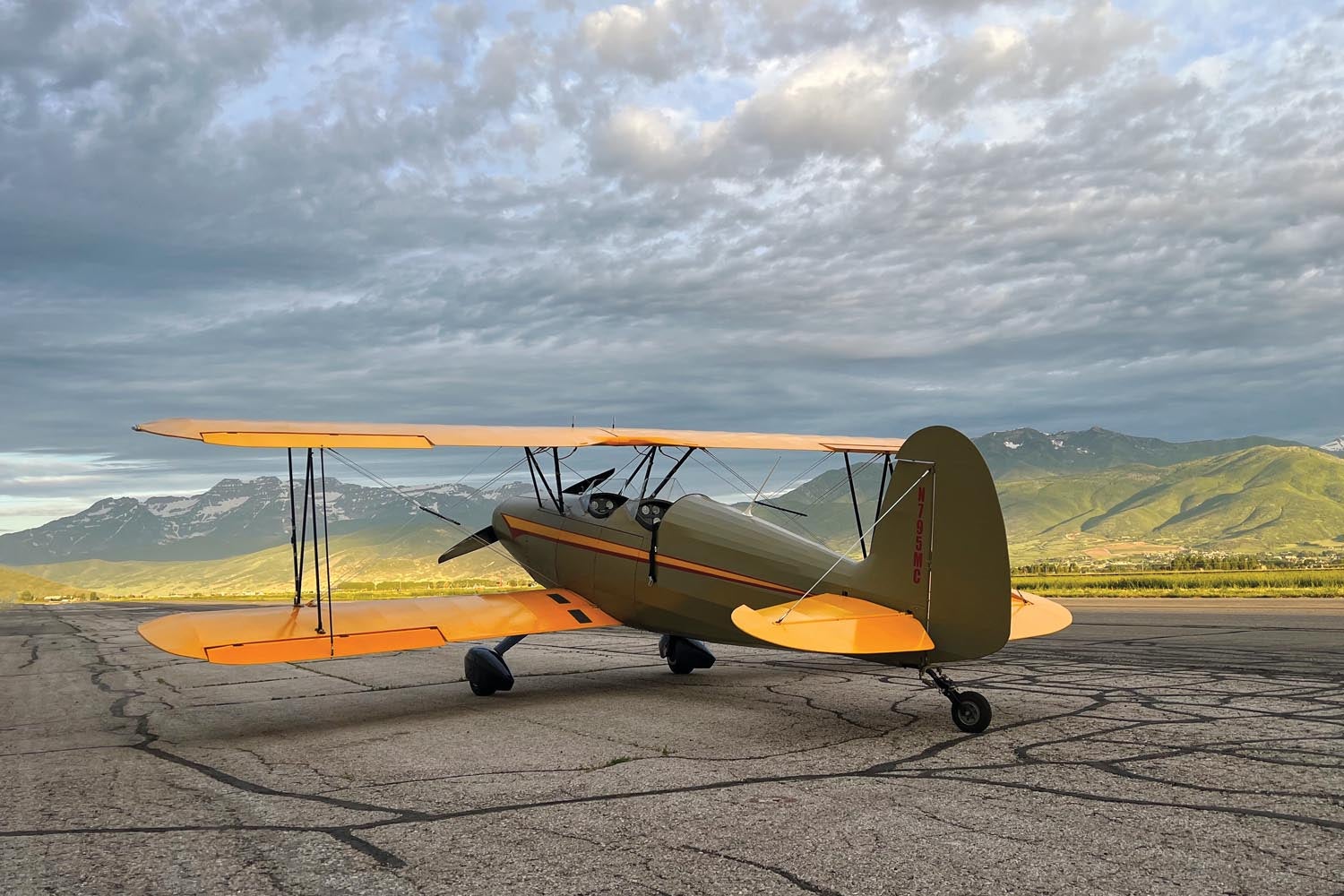 Do you remember when you first knew you wanted to build your own airplane? John Lake does. He owns the beautiful Marquart Charger you see on these pages.
Do you remember when you first knew you wanted to build your own airplane? John Lake does. He owns the beautiful Marquart Charger you see on these pages.
“When I was 14 years old, my father and I went to Oshkosh for the first time and saw this really beautiful biplane,” said John. “It was the first year Ed Marquart had brought it there, and we talked with him and oohed and aahed over it. I told my dad, ‘One day I want to build one of those things,’ and he answered, ‘Yeah, right, son.’
“I had no idea that it was difficult to build and I didn’t know the first thing about it. I just thought it was a really cool-looking airplane because I was 14 and into cool-looking things.”
The Charger certainly looks cool. Heck, it is cool! Designed by the legendary Edwin “Ed” Marquart, it is a responsive yet easy-to-fly sport biplane. It is plansbuilt, so there’s no quickbuild option.
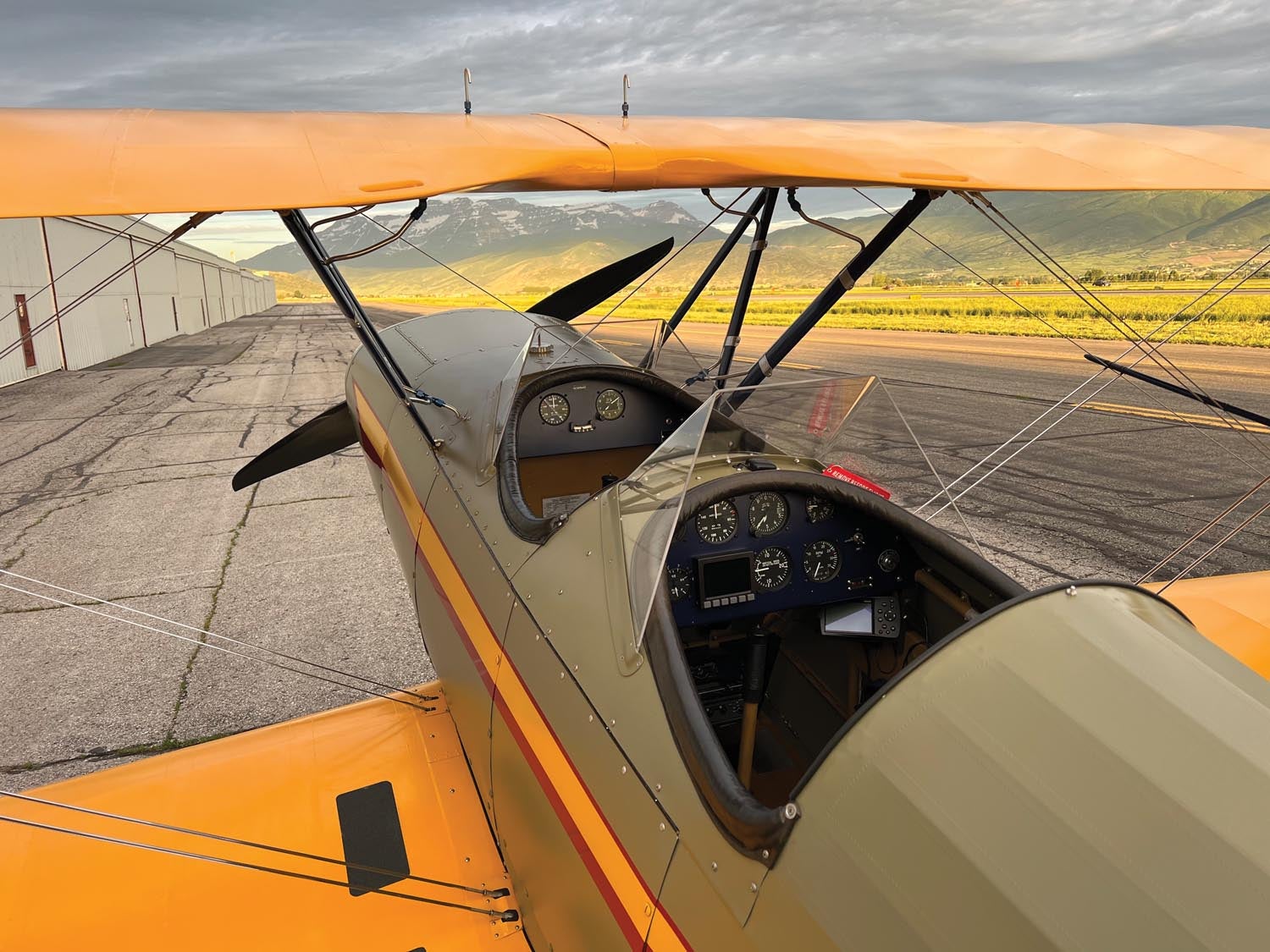
The fuselage is 4130 steel tubing with aluminum side panels from the cockpit forward. These make getting into the innards for inspection and repairs a lot more accessible. From the rear of the cockpit to the tail, it is fabric covered.
The wings are spruce and fabric, with a NACA 2412 airfoil swept back at 10°. The upper wing angle of incidence is 1° while the lower wing is 2°. Each set of wings is braced with seven flying wires per side.
The cantilevered landing gear is bulky and stout. Robust even. It has tapered hollow box legs welded from 0.090-inch flat 4130 steel with rubber donuts at the upper ends for shock absorption. It looks like it came off a battleship.
The horizontal stabilizer is adjustable via a jackscrew like a Piper J3 Cub. The ailerons and elevators are actuated by pushrods, giving a very smooth feel.
For those not familiar with Ed Marquart, he was one of the pioneers of homebuilt aircraft. Born in 1922, he served as a machinist mate on the carrier USS Shangri-La during WW-II. He ultimately wound up at Flabob Airport in California, working for Ray Stits before going into business for himself as an aircraft designer and restorer.
The first aircraft Ed designed was the MA-3 Maverick, a single-seat proof of concept. There was an MA-1 and MA-2, but they never got beyond the design stage. He sold the MA-3, but bought it back when he was 84 years old. Next was the MA-4 Lancer, followed by the MA-5 Charger, which he presented at Oshkosh in 1971. He passed away in his sleep in 2007 at the age of 85.
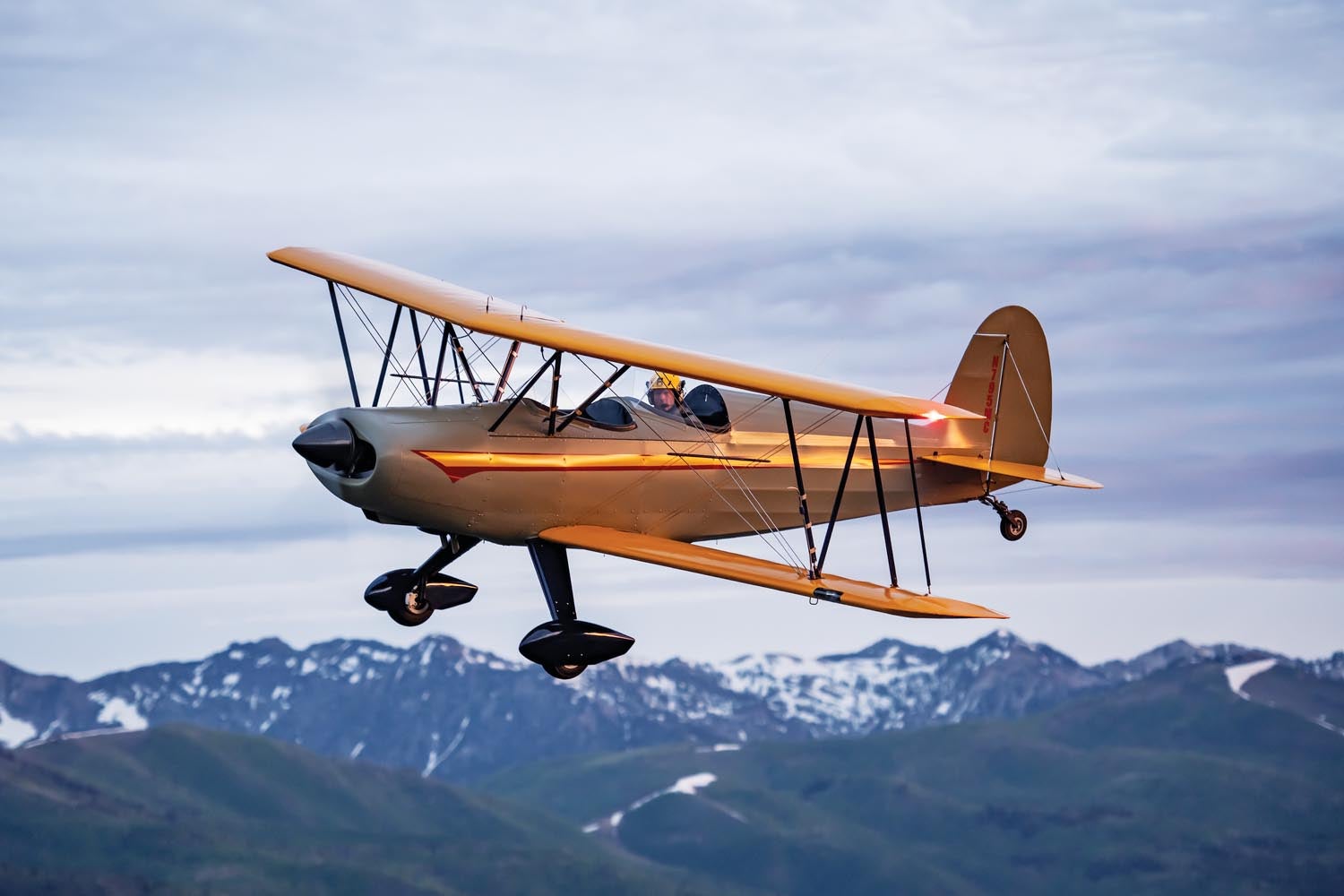
Close, but Not Quite an Owner
John’s dad was a WW-II Navy ace, flying F6F Hellcats in the Pacific. John followed his father’s footsteps into the Navy, ultimately flying C-130s. After getting out of the service he joined Delta Air Lines. But the dream of owning a Charger stuck with him throughout the years.
“Shortly after I was hired by Delta, which would have been about ’90 or ’91, in the pilot lounge in Atlanta there was a picture of a Marquart Charger that was for sale. I took it off the board,” John sheepishly admits, “because I didn’t want anybody else to see it in case they wanted to buy it; I was that excited about the idea of having a Charger! In fact, I still have that picture.”
The Charger was owned by a pilot in Florida who retired from Flying Tiger Line. The plane was only about six years old and he had it for sale for $25,000. “I called him up and talked to him about it,” said John. “I actually had a set of plans for the Charger that I had bought three or four years before and was going over everything, looking at them and imagining building one. This was long before I knew anything about general aviation aircraft.
“Down I went to Florida,” John recalled. “The guy picked me up at the airport and drove me to his flying community, which was about 15 to 20 miles away. We got to his house and while we looked over the plane, I realized I had no idea what I was looking at.”
After pulling the plane out to go flying, the owner asked John a very basic question: “Do you have any taildragger time?” John answered honestly, “No, not one hour. The smallest plane I’ve flown is a T-28.” The owner’s response was equally unexpected: “Well, you do the takeoff.”
John was in the front seat, and as the Charger started rolling down the runway, he realized the airspeed indicator wasn’t doing anything. Finally, he gained some speed and tried to lift off the ground, but the plane remained in ground effect. “I’d never flown anything this small,” John explained. “The moment we became airborne, there was a bit of a crosswind that started pushing us over to the side of the runway. I’m still trying to get it to climb, but it won’t go up. It won’t do anything. We’re just sitting there 4 feet off the ground while drifting over the grass by the side of the runway.”
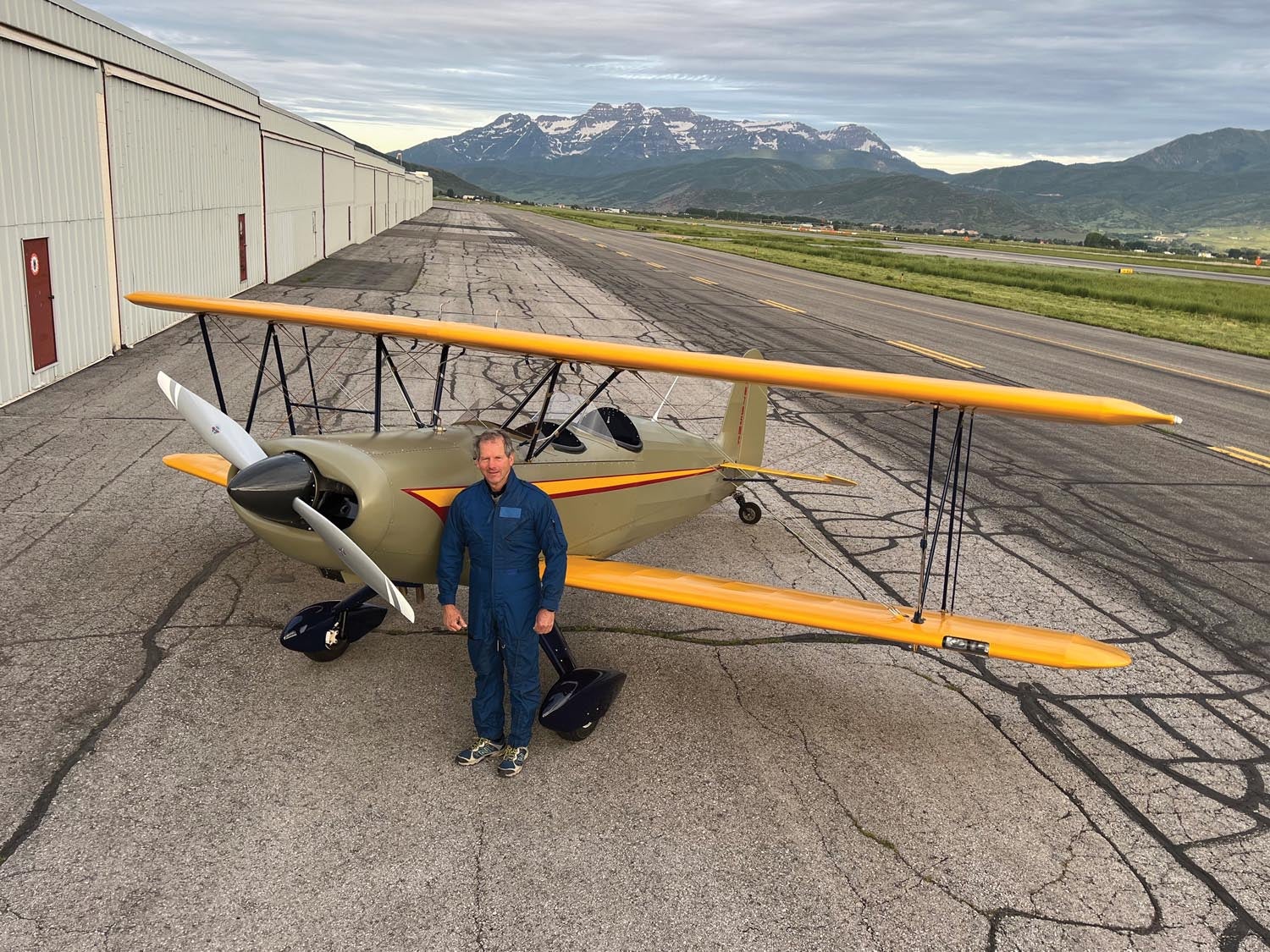
There wasn’t an intercom in the airplane, so the owner couldn’t talk to John. Finally, he took the stick and pushed the nose over. The plane began to accelerate and started to climb. “Once we were at altitude, the guy tapped me on the head and wiggled the stick. I took the airplane back and did a couple of turns while we flew around. I then gave him the thumbs up and indicated with hand signals to go back and land.
“While we were rolling out on the runway the engine quit. The owner started the engine as we were slowing down, then pulled off the runway and taxied back to his house. ‘Don’t worry about that,’ he said. ‘The idle is just set too low.’”
With the plane put away, the two men sat and talked. John finally said, “Yeah, I’d like to buy it. I would love to own this thing.” Sadly, reality set in. Being a junior first officer and not having a place to store it, things couldn’t come together to make it work out.
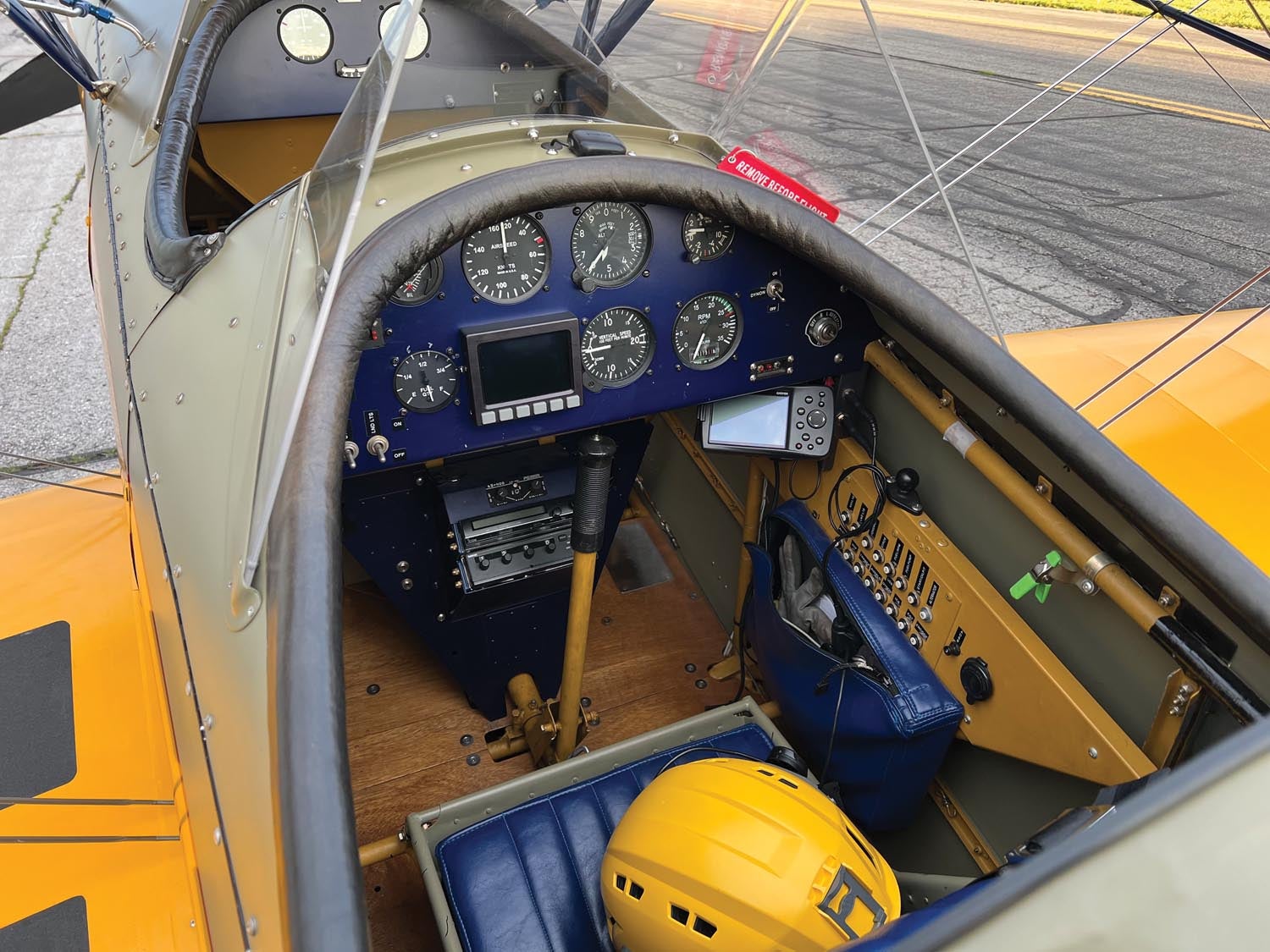
An Unexpected Coincidence
About 10 years later, there were two Marquart Chargers at Sun ’n Fun. Both were painted identically: red and white with checkerboards on the tail. John walked up to the guy who owned them and told him the story about flying the airplane with the Flying Tiger pilot. The owner of the Chargers pointed to one of his airplanes and said, “Yep, that’s the same airplane right there. I bought that airplane from him.” John looked up the N number and sure enough, it was the same.
The plane’s owner told John, “I stripped that thing down to the bare bones and checked out everything on it. I inspected every part of the airplane and found nothing wrong with it. So, I re-covered it and then we bought another one. These are the best aerobatic trainers I’ve ever owned.”
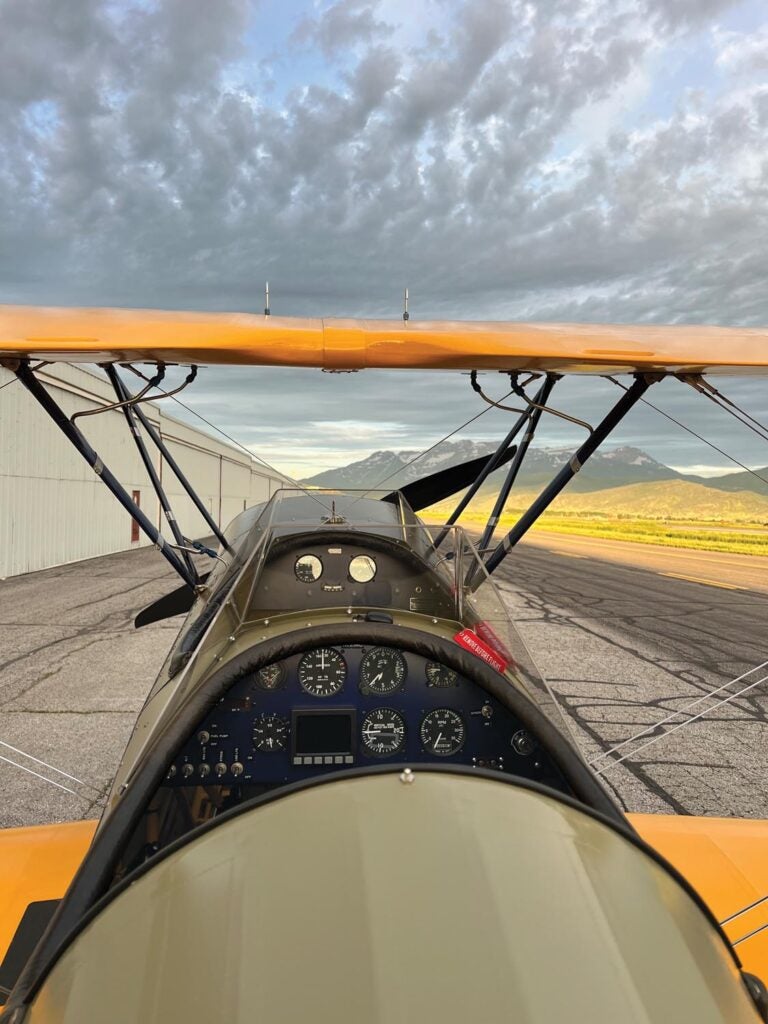
Building at Last
John’s career at Delta took him to Park City, Utah, where he raised his daughters. Along the way he never lost his love for general aviation and the desire to build. He wound up getting a hangar at Heber Valley Airport, to the south of Park City, and bought a Stinson 108. He used it to get familiar with tailwheel aircraft and to fly for fun while building a GlaStar kit. After the GlaStar was flying and the Stinson was sold, he started looking around for the next project.
Forty-five years after seeing a Marquart Charger for the first time, John bought a project to build. It actually was an amalgam of two projects, one from Seattle and one from the desert in California. “The one from Seattle had been wrecked, so it needed a couple new wings,” said John. “I ended up building two wings for it and then when I got the project from California, I ended up combining a bunch of the parts and made one flyable airplane.”
After five or six years of work, everything finally came together and the Charger was ready to paint. One of John’s friends had a Stearman as well as a library of books about them. In one of them John saw a picture of a Stearman from the late 1920s or early 1930s that looked perfect, and he decided that was the paint scheme he was going to use.
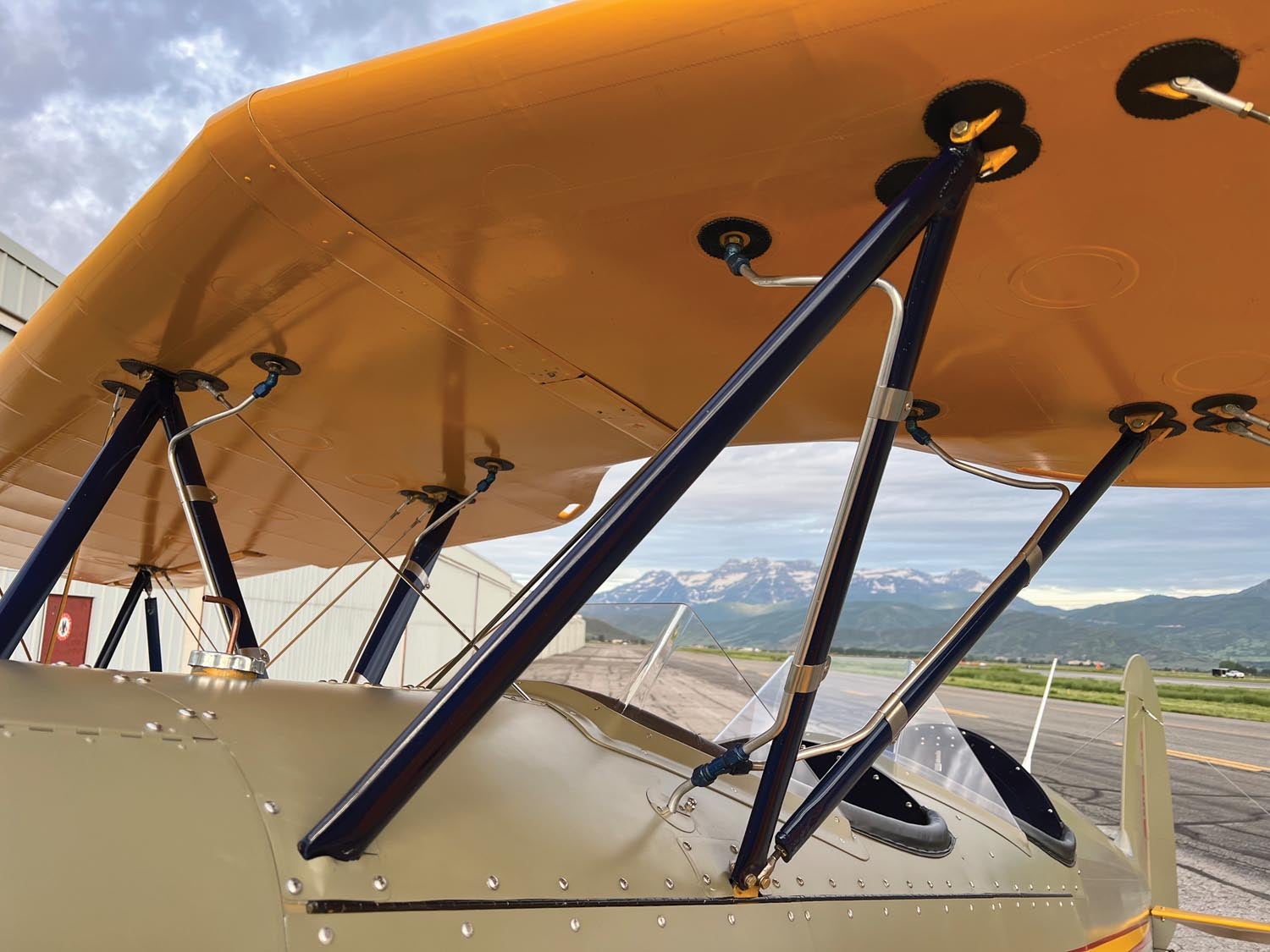
A Heartbreaking Event
Finally, John had his Charger! Unfortunately, it was damaged after only a few hours of flying time. The engine wasn’t broken in and had been running hot, but after about 12 hours, John thought he had cured the problem.
“During every flight, the oil temperature was looking better. I decided to go from my home airport near Heber City to Utah Valley to try to continue the break-in at a lower altitude,” he explained. “I was down at about 4600 feet, flying west of Provo. All of a sudden it started to go over temp again. I knew I couldn’t fly back to Heber, as I would have to climb to 8000 feet to get to Provo Canyon. To add to the stress, there were huge thunderstorms developing to the south.”
Faced with rising oil temperatures and bad weather, John diverted to a friend’s dirt strip in an area called the West Desert. “My friend had a huge hangar and I knew if I landed there and couldn’t deal with the issues, I’d just push the airplane into his hangar and come back another day to work on it.
“So I landed on that dirt strip, which was a mistake. Well, it was better than losing the engine and then having no place to put it, right? I would have been fine except there were a bunch of gopher holes along the strip. It turned out my friend had not maintained it for two years because he had lost his medical and hadn’t flown out there. But I didn’t know that at the time. I’d been in there before in my GlaStar without any issues.”
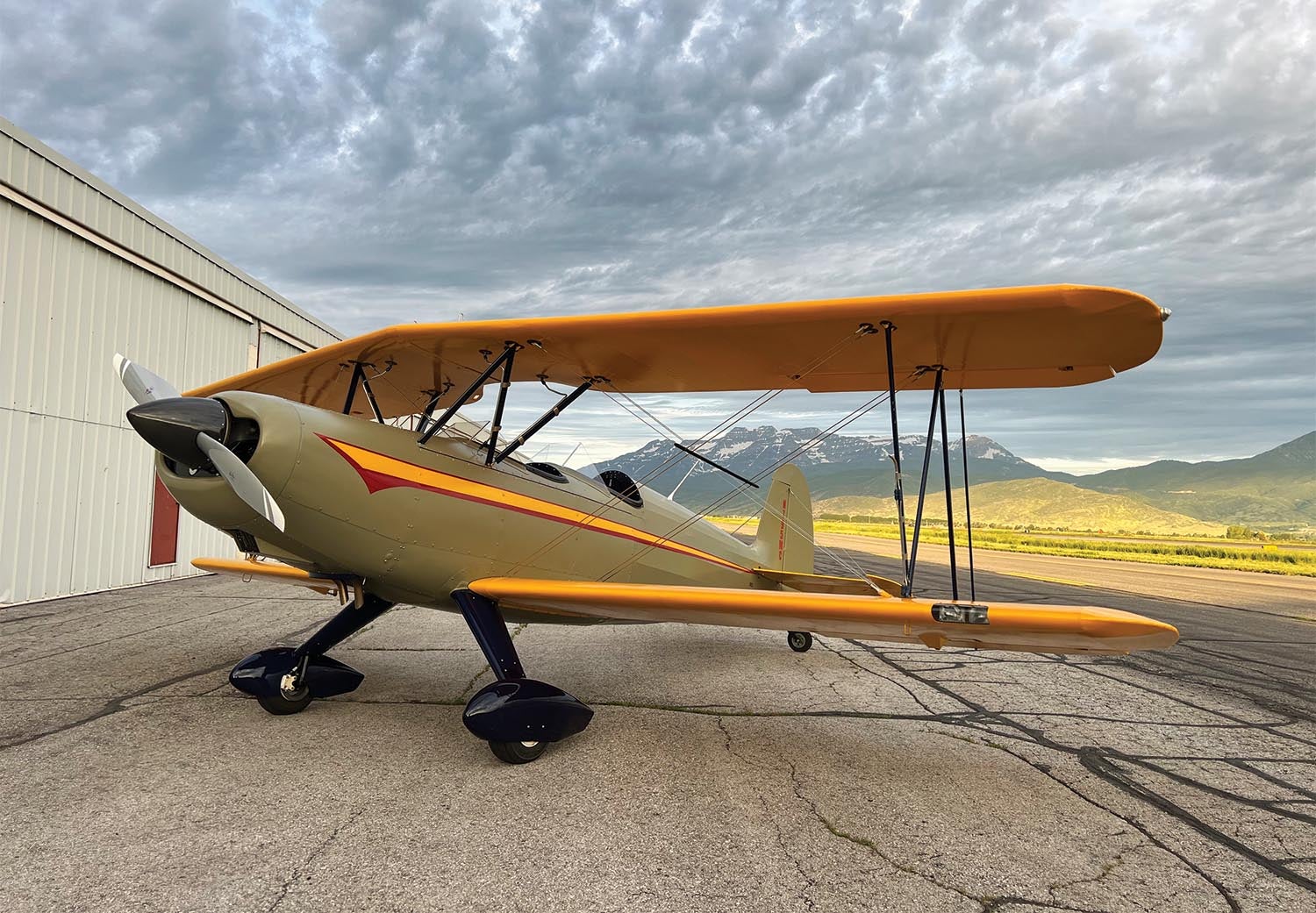
On rollout, when the Charger hit the gopher holes, it was pulled into the sagebrush to the side of the strip. John was going about 20 mph when he hit a big clump of sagebrush and the Charger flipped over. Initially, the damage didn’t look too bad. Everything seemed intact except for the upper wings, which were damaged when the plane overturned. The top of the rudder was also bent.
Unfortunately, when the plane was flipped back to right side up, it did a lot of damage to the landing gear. “I didn’t expect that,” noted John. “With it back on its gear, I could see one of the wings had a lot more damage than I thought. The spinner was also crushed from when it went over the first time. Eventually, I ended up taking the Charger apart and putting it on a trailer to truck it back to my hangar in Heber.”
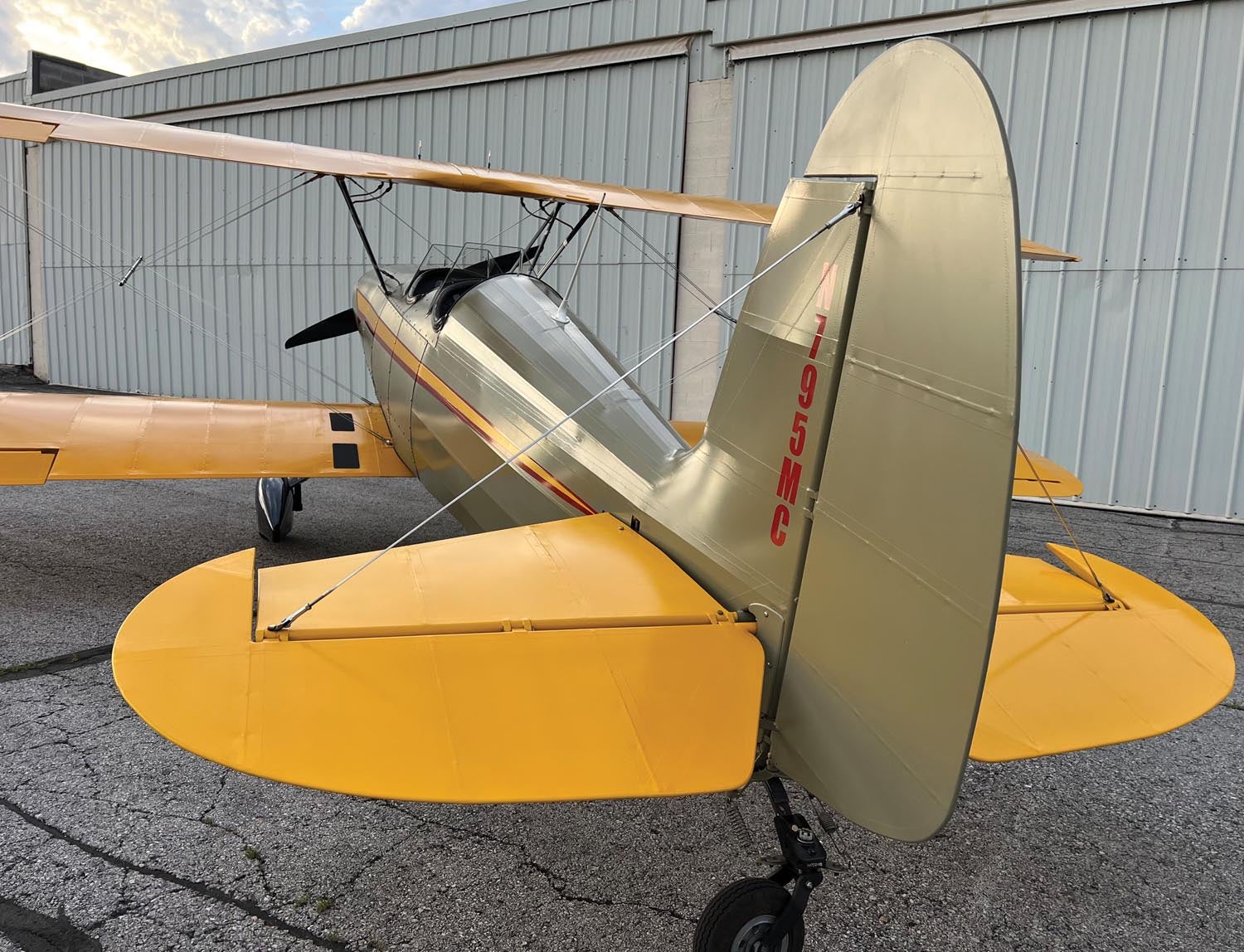
Building Again
After taking some time to recover from the bitter disappointment, John thought about rebuilding his damaged airframe. About a year and a half later, as he started looking around for parts, he bought a third project from a gentleman in Indiana. That gent’s father had been building a Charger for 25 years, but at age 72 he got cancer and passed away. His son had the parts in his garage, and after five or six years he realized that he didn’t have the money or the skills to finish the project. John flew over and looked at it for several hours. The workmanship was beautiful. It was nearly completed except for covering and almost ready to be flown. They reached a deal and shipped it to Park City.
John and his father were unloading the plane and the more they looked at it, the more they realized how outstanding the workmanship was. “I said good Lord, Dad, this thing is so nice. I might as well just finish it instead of rebuilding my original one.” Ultimately that is what happened. Along the way, John traded the first Charger to a friend, who rebuilt it and is flying it in Texas.
Several years later, Charger number two took flight. The break-in period was much less eventful than Charger number one. After a few years of flying and working out the kinks, it was time for John to make the pilgrimage to AirVenture. While there, the authors of this story prevailed upon him to enter the Charger to be judged.
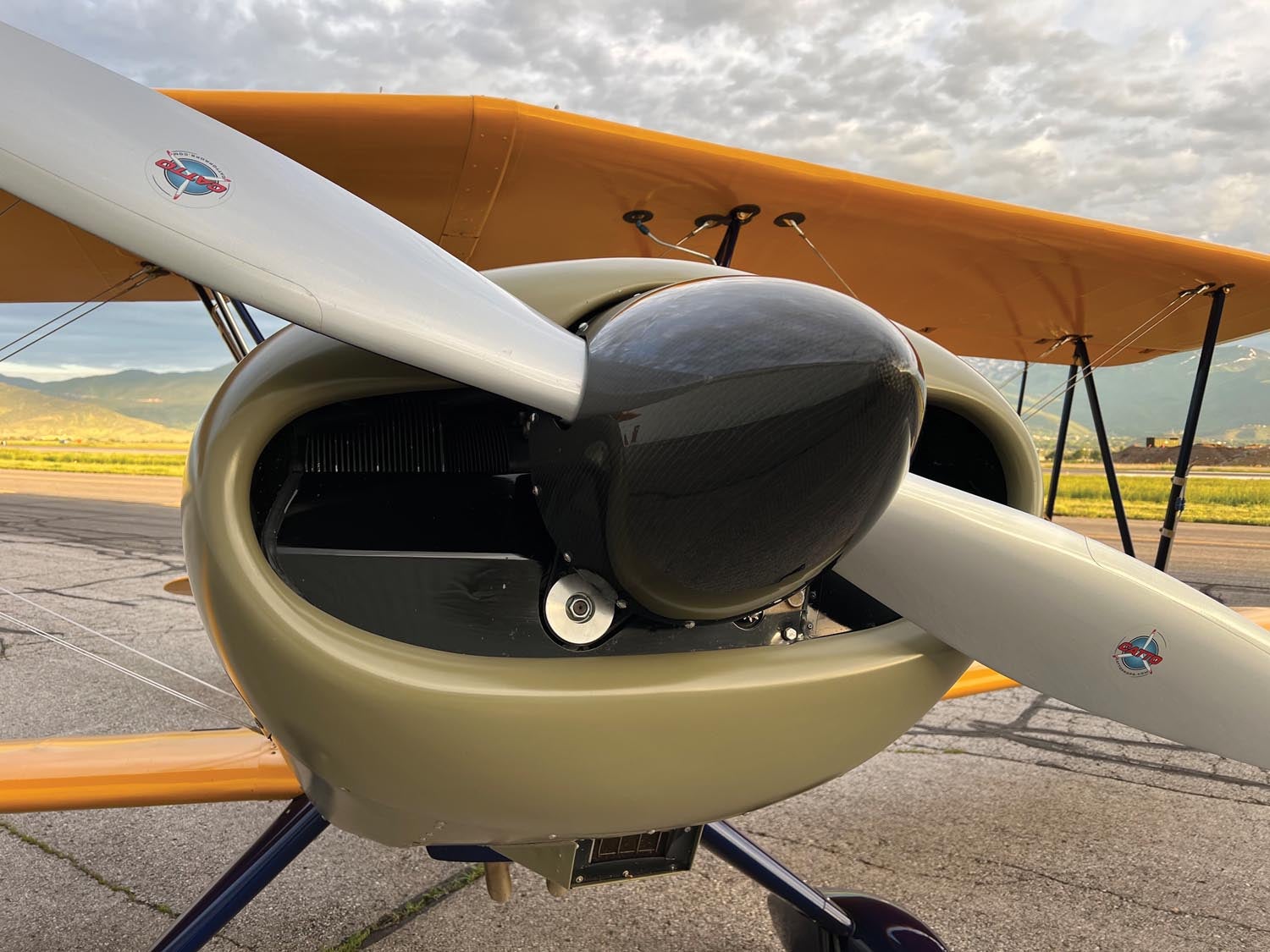
When the judges came by, John told them, “Look, I never built this thing to win an award. I just built it because I wanted to fly it and have fun. I flew it here and then my friends made me register it for judging.” The guy looked at John and said, “Do you know how enjoyable it is to look at something other than an RV? We really enjoyed seeing this. It isn’t often that airplanes like this are entered to be judged.”
While John is modest about his achievement, the judges saw fit to award him the 2016 Plansbuilt Outstanding Workmanship Award. Going over the aircraft, the fit, finish and attention to detail is impressive. While the project started with good bones, John took it to the next level while bringing it to completion.
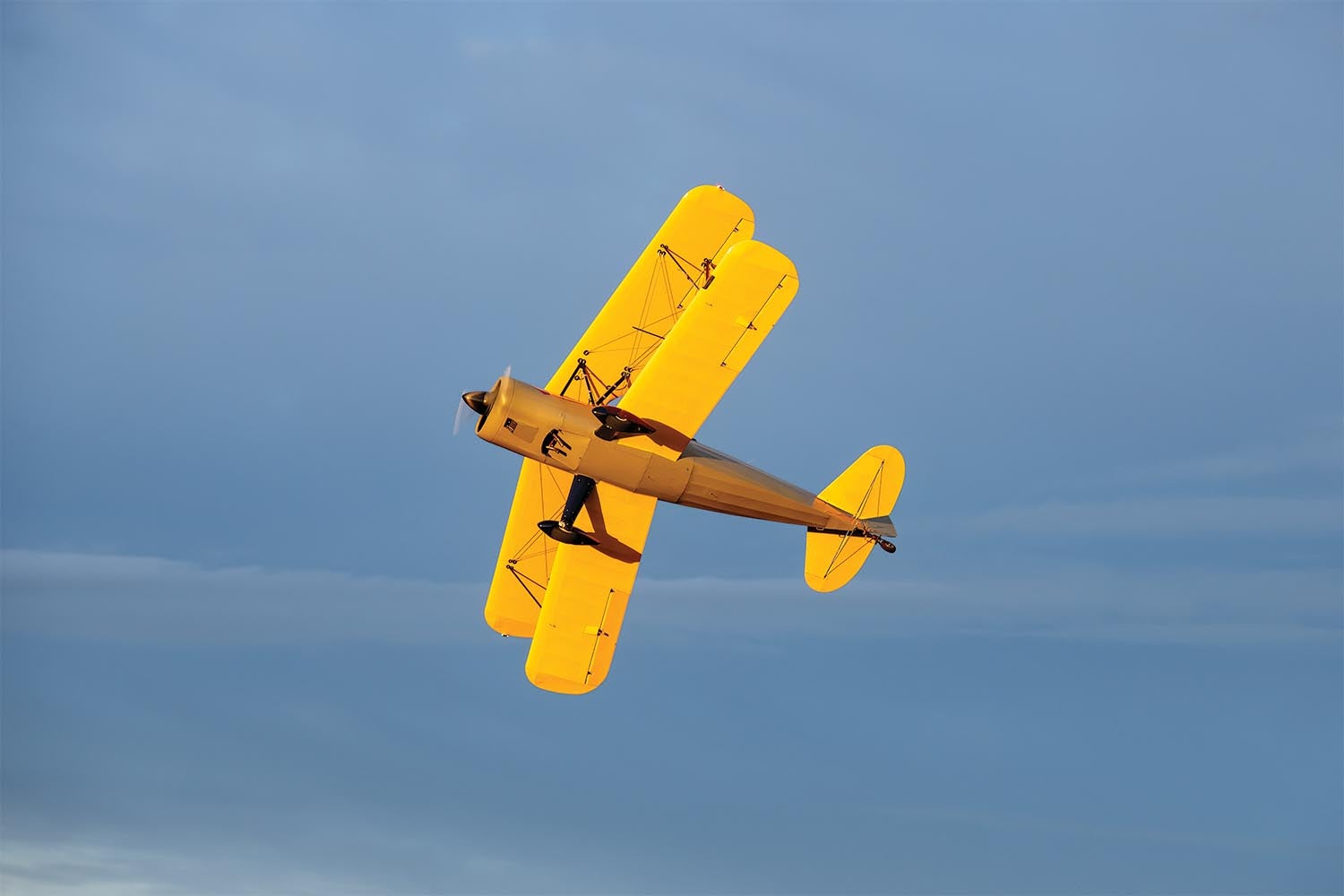
What’s It Like to Fly?
John says, “I just like how stable a platform it is and forgiving. It’s friendly when you land it and when you do aerobatics.
“As far as design goes, there’s nothing I dislike about it. The rear cockpit is a little tight. I don’t think it would be an airplane for a large person to fly around in. The rudder pedals are a little close and there’s no pedal adjustment. Over the years I’ve gotten used to it and it doesn’t bother me.
“The only other thing I don’t like is that at my altitude I need more horsepower. If I was along the beach on the West or East Coast, or in the Midwest at low altitude, it’d be the perfect airplane. But in our mountainous environment, it’s not the perfect airplane. Close, but not perfect.”
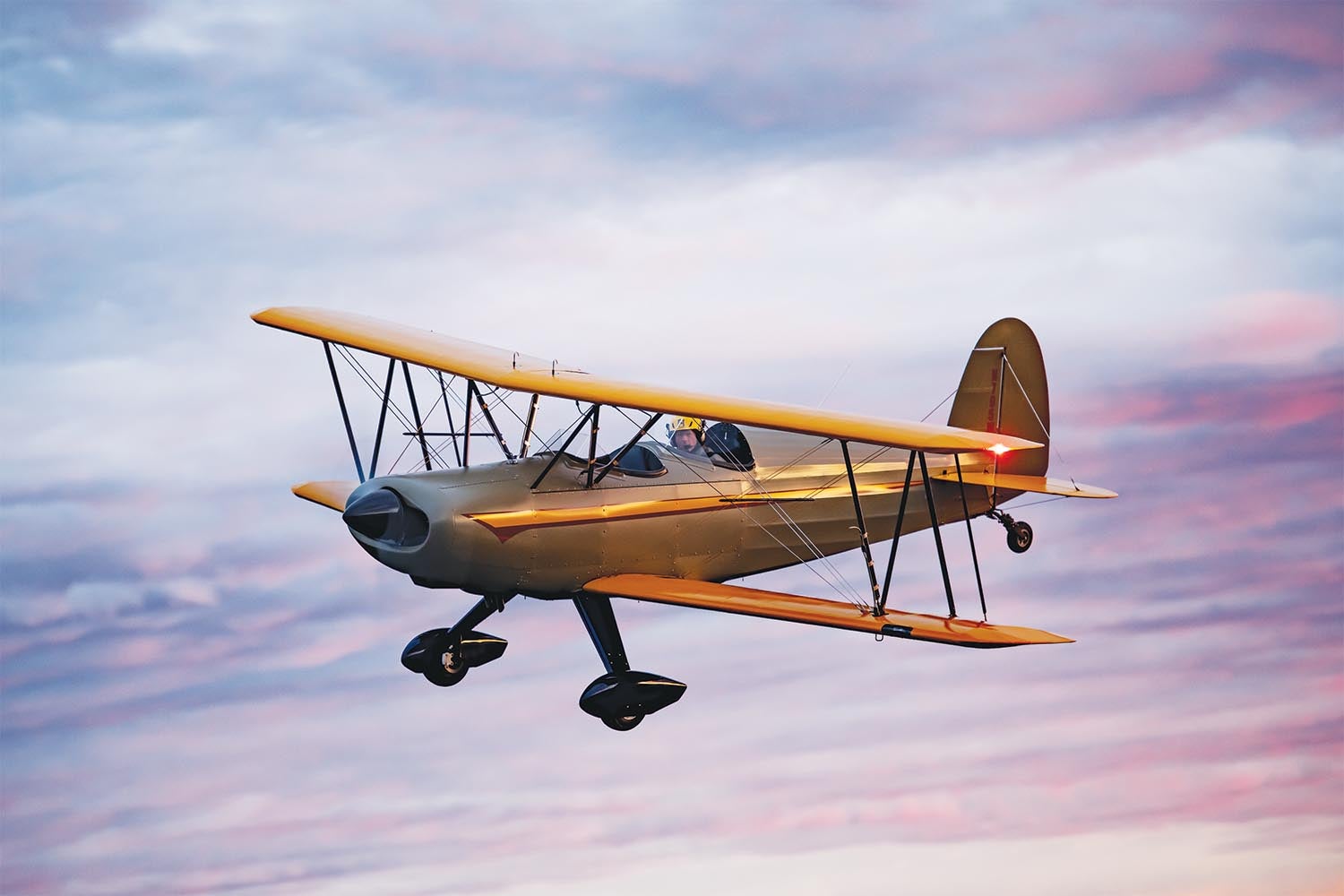
According to John, “The Charger’s roll rate isn’t what a Pitts is, but it’s certainly responsive. But, I’m flying aerobatics at 10,000 feet plus. I don’t compete, but it does basic maneuvers just fine. However, it only has a 150-hp engine, so it’s very anemic above 9000 feet. Without inverted oil or fuel everything has to be positive. If you go even partially negative for half a second, you get a face full of fuel to remind you that you can’t do that.”
 Summing things up, John said, “What I love about the Charger is that it’s a phenomenal performing taildragger. It’s docile and a lot of fun. It’s very stable. I’ve never felt like I was in a position where I might not be able to pull it out of a screwed-up maneuver. It handles nice. It lands really nice. As far as open cockpit goes, I’ve flown a Stearman and it has that huge cockpit that gets very windy. The Charger is just more comfortable to fly in than the Stearman as far as wind noise and vibration.”
Summing things up, John said, “What I love about the Charger is that it’s a phenomenal performing taildragger. It’s docile and a lot of fun. It’s very stable. I’ve never felt like I was in a position where I might not be able to pull it out of a screwed-up maneuver. It handles nice. It lands really nice. As far as open cockpit goes, I’ve flown a Stearman and it has that huge cockpit that gets very windy. The Charger is just more comfortable to fly in than the Stearman as far as wind noise and vibration.”
With the addition of a Catto prop, John has been seeing performance numbers in line with what Ed Marquart originally listed. Carrying about 25 gallons of fuel means about two-hour legs when traveling cross-country, leaving a healthy reserve. The main tank has 16 gallons and the two wing tanks hold about 4.8 gallons each.
Between the looks, the performance and the sheer joy to fly, the Charger was cool when it was first presented to the world and it hasn’t lost a step.
Photos: Jonathan and Julia Apfelbaum.













